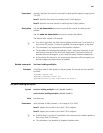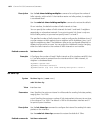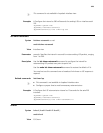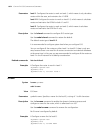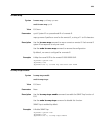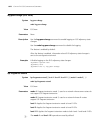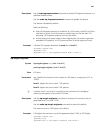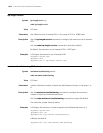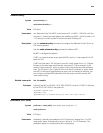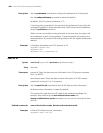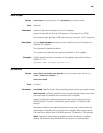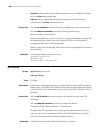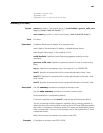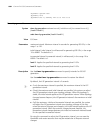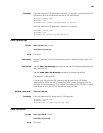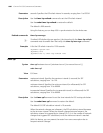
1079
network-entity
Syntax network-entity net
undo network-entity net
View IS-IS view
Parameters net: Network Entity Title (NET) in the format of X...X.XXXX....XXXX.00, with the
first part X...X being the area address, the middle part XXXX....XXXX (a total of 12
“X”) being the router’s system ID and the last part 00 being SEL.
Description Use the
network-entity command to configure the Network Entity Title for an
IS-IS routing process.
Use the
undo network-entity command to delete a NET.
No NET is configured by default.
A NET is a network service access point (NSAP), and it is in the range of 8 to 20
bytes for IS-IS.
A NET has three parts: The first part is area ID, which ranges from 1 to 13 bytes.
Routers in the same area must have the same area ID. The second part is the
router’s 6-byte system ID, which is unique within the whole area and backbone
area. The third part is the 1-byte SEL that must be 00. Generally, a router needs
one NET. In the case of repartitioning an area, such as merging or splitting, you
can configure multiple NETs beforehand for the router to ensure correct and
continuous routing.
Related commands: isis, isis enable.
Examples # Specify the NET as 10.0001.1010.1020.1030.00, of which 10.0001 is the area
ID and 1010.1020.1030 is the system ID.
<Sysname> system-view
[Sysname] isis
[Sysname-isis-1] network-entity 10.0001.1010.1020.1030.00
preference (IS-IS view)
Syntax preference { route-policy route-policy-name | preference } *
undo preference
View IS-IS view
Parameters preference: Specifies the preference for IS-IS protocol, ranging from 1 to 255.
route-policy-name: Routing policy name, a string of 1 to 19 characters. The
preference applies to routes passing the routing policy.



